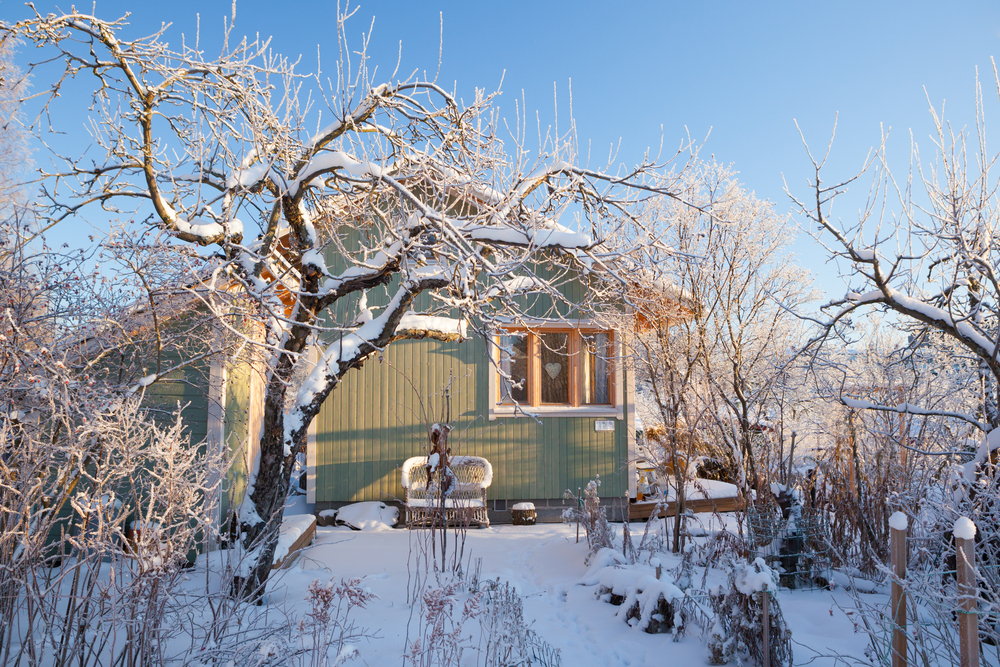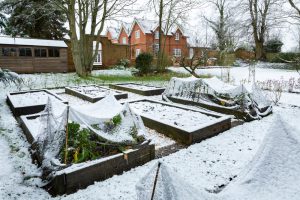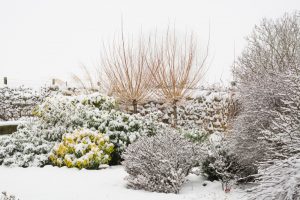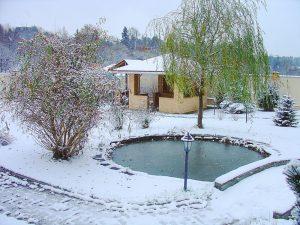
When you talk about winter gardening, the most frequently asked question is whether or not plants can survive in extremely cold temperatures. Generally, the answer is no because scientific research reveals that plants consist of a genetic ability that allows them to sense any changes in the atmosphere. After they can perceive these changes, they alter their growth accordingly.
On experiencing warm temperatures in the winter, plants can grow out flowers and thus, grow. However, cooler winter temperatures bring about a decline in the growth and flowering rate.

Ways to Protect Flowering Plants in the Winter
As aforementioned, some plants can make it through the winter freezes. However, there are those plants that flower in the winter season, such as plum, cherry trees, and camellias, which struggle throughout.
When blooming is inevitable, and buds become swollen, there is significant damage that can be inflicted on the buds due to a hard freeze. You may not even be able to see this damage until the flowers bloom, and by then, it will be too late because they will have numerous brown spots present on the petals. On the other hand, sometimes, the buds can freeze entirely and fall off the plant. Even fully bloomed flowers can completely turn brown and fall.

Here are some things you can do to not lose your flowers entirely or not be disappointed when the time finally comes for them to bloom.
Now that you know how to ensure the protection of your flowers in the winter season, here are some dos and don’ts for you to abide by. These will allow you to enjoy the growing and blooming of your winter plants.

The Do’s of Winter Gardening
1. Carry on planting
The conditions may be tough, but that does not mean you should stop sowing seeds entirely. Go out to your garden and feel the ground. If it is soft, then it is time to bring in your tools and start digging as many holes as you want.
2. Use mulch generously
Mulch is an important tool to maintain the stability of root temperatures. Common mulches that you can use for winter gardening include shredded bark, evergreen boughs, and bark chips.
3. Use compost
Compost is known for providing various organic nutrients, which are especially beneficial for the soil. However, keep in mind that the compost should not be over three inches thick.
4. Water beforehand
Once a freeze has been predicted, be sure to water your plants before the time comes. This is especially important for annuals and potted plants to ensure that they are able to survive a difficult freeze. By watering them in advance, you will allow them to retain moisture even before the ground freezes and do not allow the roots to take in water.
Remember to provide ample water to the shoots above the ground, along with the roots.
5. Provide extra protection to container plants
Be sure to provide coverage to containers and pots housing the plants. You can use the methods mentioned above or use any kind of blanket that retains heat for a longer period of time. In addition, it is advised that you move your plants during the winter season by placing them under eaves or positioning them near the foundation of your house.
6. Take plants indoors
Before you can bring in your plants inside, you will have to do some pest control. This is only possible by spraying the leaves of the plants with water and insecticidal soap to ensure that no pests are attracted to it when it is inside your home.
Moreover, be sure to place them somewhere where these plants are bound to receive bright but indirect sunlight for no less than five hours a day. They should be kept away from heating vents and drafts, as not all plants are able to grow actively in the colder months.

Winter Gardening – What Not to Do
1. Involve fertilizer
Winter is a season when plants are allowed to rest and thus, go dormant. However, if you force them to grow even before the ground becomes warm, their growth will be interrupted, and they will be unable to rejuvenate.
2. Take a break from your usual water cycle
The winter months bring about dry periods, which usually occur when there is no snow on the ground, nor is it frozen. At a time like this, a deep watering once a week is highly recommended. If you have just planted in some new seeds, then they especially require additional watering.

Additional Tips for Gardening in the Winters
Here are some things that you can try to make sure that your winter gardening process is smooth and easy.
1. Order some catalogs
If you are a die hard gardener, then you must have been looking forward to your catalogs arriving as soon as January starts. You can pore through the glossy pages, which consist of colorful photos of plants, and learn all about the plants that you should be growing in the winter season.
2. Do some reading
As winter approaches, this is the best time to do some light reading. You can now sit by the fireplace and enjoy that one gardening magazine or book that has been on your to-read list for a while now.
3. Gain some knowledge
Winter is not only a good time to grow plants but an excellent one to gain in-depth knowledge of design and gardening. Feel free to take a workshop or a class and master the art of gardening this winter.
Winter gardening seems daunting to some, but with a helpful guide consisting of dos and don’ts, there is not much that you cannot do.






